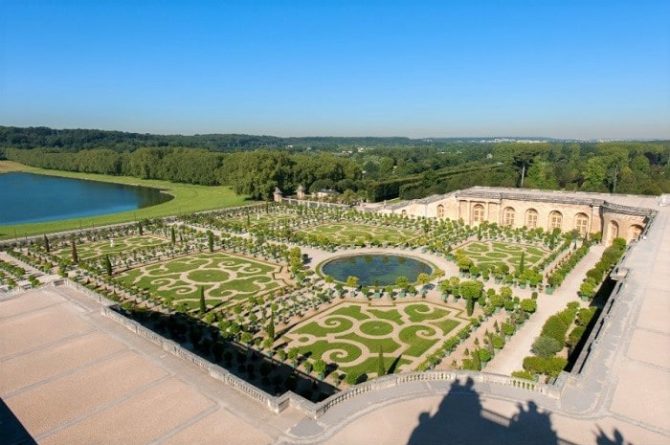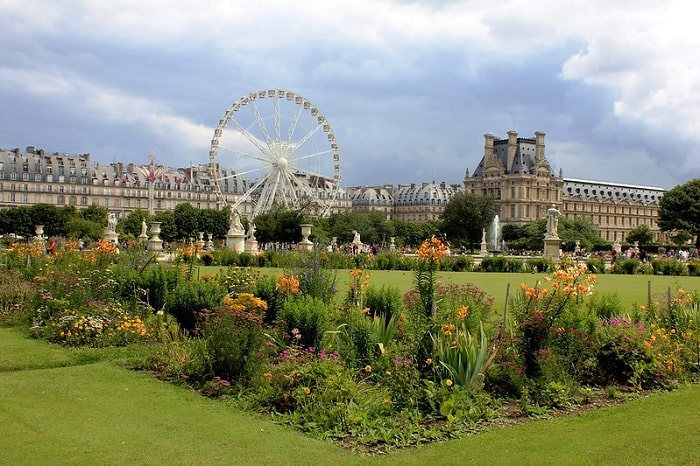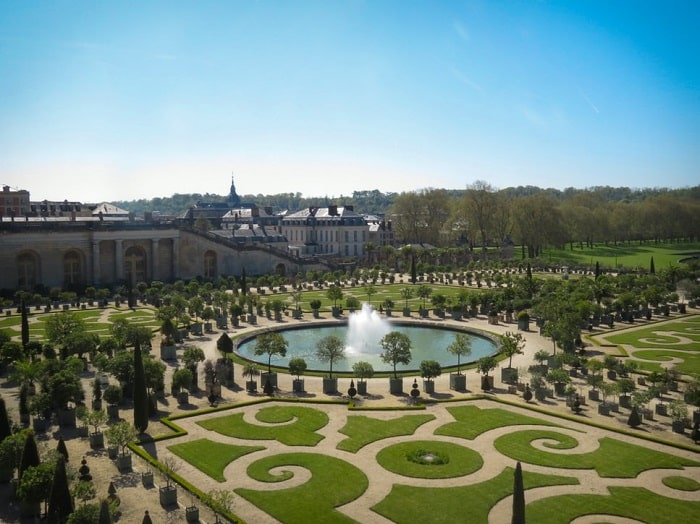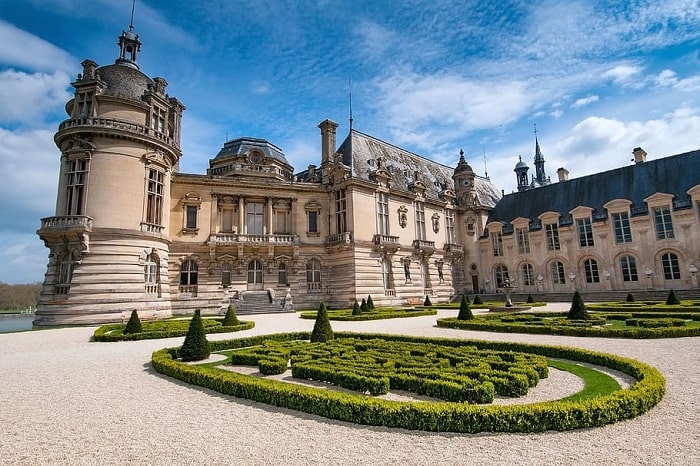André Le Nôtre: Magnificent Masterpieces of the Gardener’s Art
Gardening is an ephemeral art form. Few gardens withstand the vagaries of time, and even fewer master gardeners, if remembered at all, are afforded the status of their counterparts in architecture and the other applied arts. One singular exception is André Le Nôtre, a name synonymous with some of France’s, and the world’s, greatest gardens, including Versailles, Vaux-le-Vicomte, Chantilly, and Fontainebleau, whose work represents the apex of French garden design.
This year, Paris celebrates the 400th birthday of this distinguished native son with L’Année Le Nôtre, a year-long festival of exhibitions and events honouring the greatest gardens of Le Nôtre’s stupendous achievement. A man who was intricately linked with the most glorious time and the most exalted characters in the history of France.
In many ways, André Le Nôtre was destined to be a gardener. Born and raised in a house adjoining the Tuileries Gardens, where his father was a chief gardener, the tree-lined allées and elegant parterres of this royal oasis were his first playground. As a boy, Le Nôtre adored watching his father at the drafting table carefully rendering the meticulous plans required for such elaborate gardens, and it became clear early on that the youngster had a creative gift all of his own.
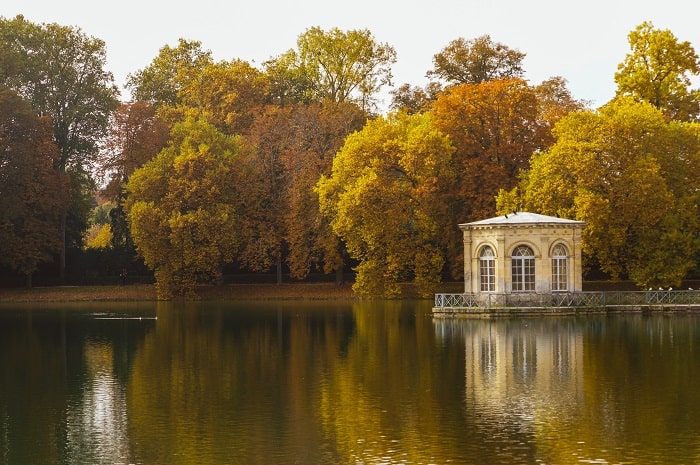
Fontainebleau. Credit: Iris, Unsplash
At a time when vocations often passed from father to son, it seemed only natural that such a promising youth would follow in this gentlemen’s profession. But André’s interests leaned toward painting, and while still in his teens he persuaded his father to apprentice him to Simon Vouet, a prominent painter whose studios were located in the nearby Grande Galerie of the Louvre. It was here that André gained entrée to the ateliers of engineers, architects and artists, some of the leading lights of the time, whose influence would not only help determine the trajectory of Le Nôtre’s career, but would inform his later work and introduce him to men he would collaborate with down the road. In his twenties, Le Nôtre eventually returned to gardening, but with a critically magnified vision of how his talents might best be put to use.
Le Nôtre quickly rose to a certain prominence, due in part to his father’s impeccable credentials but also to the young man’s evident promise – his talent, diligence and plain good sense were recognized early on, landing him a position in the employ of Louis XIII’s brother, Gaston, Duke d’Orléans, in 1635. The duke’s residence was at the Luxembourg Palace, so it was in the Luxembourg Gardens where the 22-year-old first made his mark, succeeding at a remarkably young age an illustrious predecessor who had retired.
It is important to note that the term gardener does not begin to describe the many areas of expertise a professional of Le Nôtre’s stature, employed by royalty, had to master over time. Mathematics, particularly geometry, for drafting plans, calculating angles and surveying land; engineering and hydraulics for taming the earth and water to his designs, providing a source of irrigation, filling water basins and powering fountains; leadership and organization, for overseeing scores of under-gardeners and huge crews of labourers; a knowledge of sculpture and draftsmanship, for the many decorative elements; and above all, that most ephemeral and crucial facility, an eye for poetry, harmony, and beauty.
Two years into André’s Luxembourg duties, his father decided to retire from his post at the Tuileries, and André was readily appointed to take his place, where by all accounts he was competent, skilled and acquitted his duties diligently. Both of these gardens, however, were already largely plotted out and there would have been limits to what the gardener could do to distinguish himself and put his mark on the work. No matter how talented or visionary, Le Nôtre may have spent the rest of his days thus, comfortably tending to the Paris royal gardens and other aristocratic estates, but for attracting the eye of a certain Nicholas Fouquet.
The Dream Team
Superintendant of Finance and protégé to the powerful Cardinal Mazarin – Louis XIV’s chief minister and surrogate father – Fouquet had proved his loyalty to the king during the Fronde (1648-53), a dire but unsuccessful uprising of nobles against the crown. Confident of his standing with the 23-year-old king, and vying for the position of the recently deceased Mazarin, Fouquet organized a stupendous party at his newly completed estate 30 miles outside Paris, the princely Vaux-le-Vicomte.
For five years, beginning in 1657, Fouquet had poured all of his brilliance, unparalleled taste and vast wealth into building the estate, assembling a dream team of artisans consisting of Le Nôtre, architect Louis Le Vaux, and artist and interior painter Louis Le Brun, who had been Le Nôtre’s fellow apprentice under Simon Vouet in the early days. Evidently, Fouquet prided himself on having recognised their abilities and plucked them from relative obscurity. Indeed it was Fouquet’s prescience that would very soon catapult these men into the highest circles of the realm.
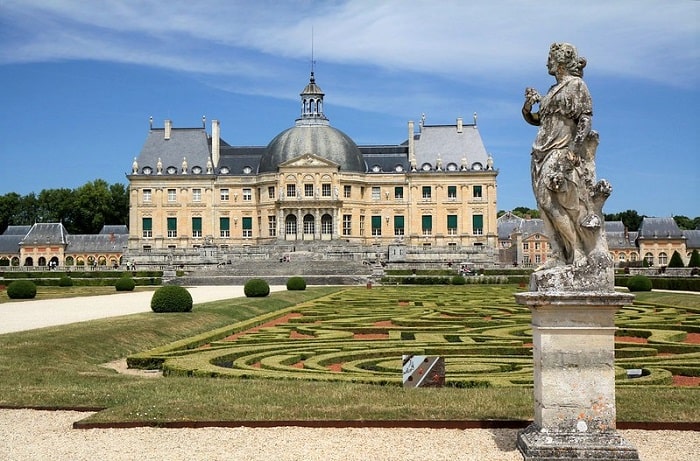
Château de Vaux-le-Vicomte. Credit: Olga Khomitsevich, Flickr
In 1661, as the works were winding down, Fouquet meant to unveil his masterpiece at a party the likes of which had never been seen before nor will likely be seen again.
The guest list topped 1,000 and included all the great luminaries of the day, as well as the guest of honour, Louis XIV himself. The supremely elegant Vaux-le-Vicomte, a pinnacle of 17th Century architecture and design, was illuminated by thousands of glittering lanterns. A lavish eight-course feast was followed by entertainment in the gardens – including a play by Molière and a ballet by Lully, both of whom would become favourites of the king – and a breathtaking fireworks display. Guests strolled among Le Nôtre’s graceful parterres, marvelling at the water basins that perfectly mirrored candlelight, fireworks and château, the charming sculpture-embellished grottos and a horizon as vast as the sky, as though it were all part of a glorious mirage.
Whether blinded by his own ambition or intoxicated by all he had achieved, we will never know. What we do know is that Fouquet, mastermind behind the most marvellous estate in the île de France, had severely miscalculated his standing with the king, and, as a result, became the agent of his own destruction.
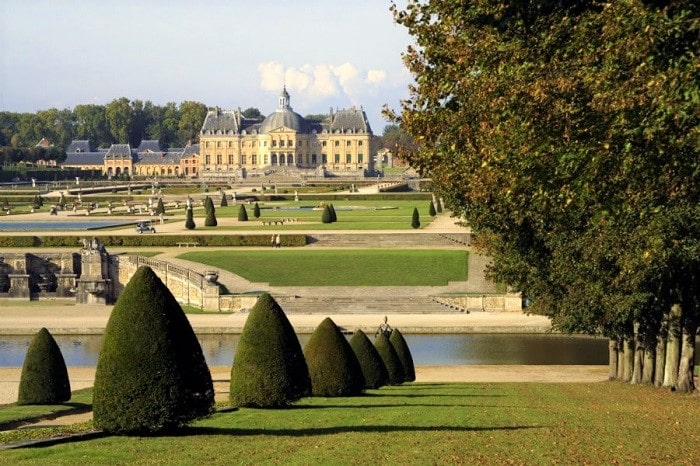
Chateau de Vaux-le-Vicomte. Credit: Blondeaux
Three weeks after the party, Louis, outraged at Fouquet’s audacity at having flaunted something so dazzlingly and unquestionably more elegant than anything the king possessed, sent his deputy d’Artagnan to arrest Fouquet on trumped-up charges of embezzlement and crimes against the crown. The king then proceeded to empty the estate of its furnishings, tapestries and even the orange trees lining the garden, shipping them off to Versailles, which was not much more than a hunting lodge in a backwater.
Fouquet’s trial lasted three years and ended in exile, a sentence that was ‘commuted’ to life imprisonment in France, where Fouquet would spend the last 21 years of his life, never returning to Vaux-le-Vicomte.
The Sun King’s Chateau
Louis was not content with the furnishings of Vaux. Having witnessed first-hand the grandeur of Fouquet’s vision, the king was not to be outdone, and wasted no time assembling the very same team to transform the characterless and swampy ground of Versailles into a château worthy of the Sun King.
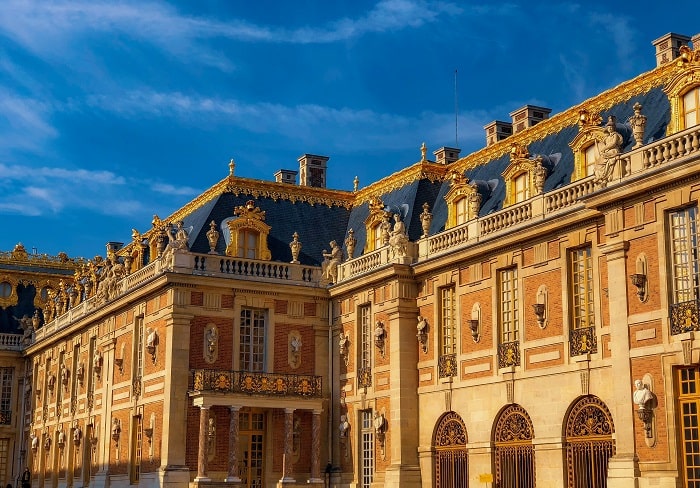
Versailles. Credit: Anthony Choren, Unsplash
The ever-expanding Versailles proved a challenge greater than Le Nôtre had ever encountered. On top of a recalcitrant and uninviting landscape, the 48-year-old gardener had to contend with a capricious king, a circumstance that actually played to Le Nôtre’s strengths. To all the king’s indecision, impulsiveness and volatility, the patient gardener responded with calm, humour and fortitude. For it turned out that the Sun King may well have been titled the Gardener King, as his passion for gardening was as great as his ardour for hunting and war, and he tirelessly oversaw – if not helped conceive – every last box hedge and rose arbour. For the remainder of his 72-year reign, Louis obsessively occupied himself with perfecting his gardens, creating, destroying and recreating in equal measure until the vast and varied landscape finally covered nearly three square miles and severely strained the royal coffers.
Le Nôtre proved more than equal to the task, and worked steadfastly in tandem with crews of thousands of soldiers to move vast quantities of earth, bring in water – a constant source of difficulty and ingenuity – and contended with the whims and temperaments of his other collaborators and his sovereign to create one of the most distinguished gardens on earth.
The French style of gardening that reached its pinnacle with Le Nôtre had little to do with just flowerbeds and shrubberies. Although critics and connoisseurs alike refer to the style as ‘taming nature’ – that is, imposing a calculated symmetry via an intricate and highly stylised play of hedgerows, lawns, walkways, flowerbeds, mazes, botanic gardens, fountains, water grottos, canals and water basins – the artistry, precision and sheer virtuosity of the form was, at it’s very best, an astonishing feat of engineering and illusion.
One of Le Nôtre’s most enduring contributions to the form was his genius for creating vistas that had the effect of both visually reducing a garden’s immensity from certain vantage points, while establishing the illusion of infinite depth from others. This dynamic is the crowning achievement at Vaux-le-Vicomte, largely considered Le Nôtre’s masterpiece for its grace and harmony of proportion. Facing out toward the gardens from the château the immensity of space is drastically foreshortened, and thus rendered pleasing to the eye, by a series of four seemingly equal-sized basins. In reality, the basins are not only quite far apart, they are also vastly different in size, becoming increasingly larger as one walks toward the end of the garden. Returning toward the château, the walker has the intensely pleasurable experience of seeing Vaux’s entire facade, at a distance of 1,500 feet from the château, reflected in the Great Water Mirror, the first of its kind in the history of garden design.
Le Nôtre would spend 30 years at Versailles working closely, and harmoniously, with the king. But not exclusively. Louis’s imprimatur naturally gave Le Nôtre cachet with the court, whose illustrious members sought him out for their own projects. The year Le Nôtre began work on Versailles, he was also hired by the Prince of Condé, one of the great personages of the time, to design the gardens at Chantilly, whose oddly shaped moat and château proved a challenge that Le Nôtre tackled with characteristic grace, creating a charming ensemble of basins, reflecting pools and parterres all highlighting a central sculpture of the prince on horseback.
Celebratory Exhibits
Jean-Baptiste Colbert, Louis’s finance minister and a powerful figure in the government, hired Le Nôtre to design the gardens at Sceaux, his estate six miles outside Paris. The mastermind behind Fouquet’s fall – Colbert had embarked years earlier on a successful if secretive campaign to disgrace his rival and erode the king’s trust well before Vaux-le-Vicomte sealed the preceding finance minister’s fate – he waited a prudent eight years before embarking on the embellishment of his own estate. When he did get around to hiring Le Nôtre, he ended up with a grand design of 18 cascading basins that culminated in an octagonal pool with a towering fountain that raised a mighty plume. The château no longer stands, having been razed during the Revolution, but the gardens are still a testament to Le Nôtre’s versatility and his particular genius for working with whatever the landscape presented to him.
That so many of Le Nôtre’s gardens have lasted, or have been painstakingly restored, as in the case of Vaux, is testament to his legacy. The Tuileries, Fontainebleau, Saint-Cloud, Saint-Germain-en-Laye, Meudon, are the other great estates and châteaux in or near Paris whose gardens bear Le Nôtre’s signature and who are paying homage to the gardener with lectures, exhibits, special renovations and celebrations.
Versailles leads the group with four exhibits focusing on an aspect of the gardens, including ‘Le Nôtre in Perspective,’ which introduces the gardener in all his many guises and illustrates the extraordinary genius, and surprising modernity, of his work.
Vaux-le-Vicomte celebrates into the fall with guided walks and candlelit dinners and visits so visitors might conjure a small part of the majesty of Vaux as it was when it first infuriated and bewitched the Sun King.
Originally published in the August-September 2013 issue of France Today
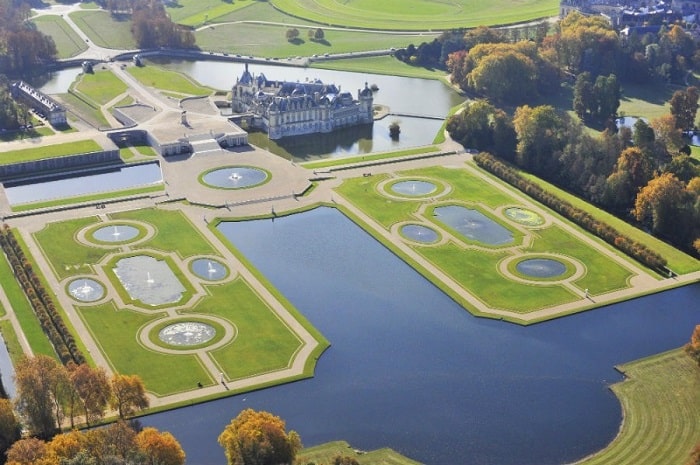
Chantilly. Credit: J.L. Aubert
Share to: Facebook Twitter LinkedIn Email
Leave a reply
Your email address will not be published. Required fields are marked *

